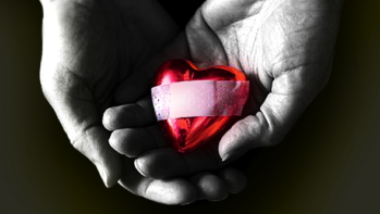Let’s Talk
Many of us take our sex and gender identities for granted. In fact, one of the characteristics that we usually notice about people when we first meet them is their sex (male or female) and their presumed sexual orientation (heterosexual, bisexual, homosexual). These assumptions affect how we interact with people because of societal norms linked to gender roles and sexual orientation expectations.
Based on a relatively recent Canadian Community Health Survey, 94% of Canadians aged 18 to 59 consider themselves to be heterosexual; 1.0% identified themselves as homosexual, and 0.7% as bisexual. Although concepts such as sex and sexual orientation appear simple to understand, in reality, they fall within a gray area that reflects the complexity of sexuality in general.
Sexual reproduction which involves a male and a female counterpart is the most common form of reproduction in animals and plants. This kind of reproduction promotes genetic diversity and renders the offspring more adaptable to their environment.
However, there are macroscopic organisms that do not follow this rule. For instance, Jerry Johnston Ph.D., Professor at the Department of Biological Sciences at the University of Texas, has identified a type of female lizard that does not need a male to procreate (see picture below). Each baby female lizard is the exact copy (i.e., clone) of its mother, therefore male lizards are non-existent.
 Female Lizard (Left) Another example of unusual sexual reproduction is the land gastropod or snail. This type of snail is a hermaphrodite, therefore it has both male and female sexual organs. This mollusk is able to play the role of the male at the beginning of their sexual reproductive life, and later on, assume the female role.
Female Lizard (Left) Another example of unusual sexual reproduction is the land gastropod or snail. This type of snail is a hermaphrodite, therefore it has both male and female sexual organs. This mollusk is able to play the role of the male at the beginning of their sexual reproductive life, and later on, assume the female role.
Although all humans reproduce sexually, our sexuality is more complex. Sex for the human-animal involves a number of factors such as physical, psychological, emotional, spiritual, and social components.
According to Wikipedia, sexual orientation describes a pattern of emotional, romantic, and/or sexual attractions to the opposite sex, the same sex, both, or neither, and the genders that accompany them. The conventional types of sexual orientation are heterosexual, homosexual, bisexual, and asexual. However, there are other less common types of sexual orientation that are also recognized: transgendered, transexual, intersex, questioning, and two-spirited.
Sexual orientation may be the result of a combination of genetic, early uterine hormones, and environmental influences. No single cause has been identified to explain a person’s sexual orientation. All major health professional organizations (i.e., American Psychiatric Association) have stated that sexual orientation is not a choice, is stable throughout a person’s life, and usually established during early childhood.
Case in point, clinical psychologist Jay C. Wade Ph.D. did a recent study of 117 homosexual men who pursued Sexual Orientation Change Efforts (SOCE). Wade concluded that while some men reported that the therapy was beneficial, the changes in sexual feelings and behavior did not change the participants’ sexual orientation.
In 1948, American sexologist Alfred Kinsey published the controversial Sexual Behavior in the Human Male and created a scale to measure sexual orientation. The premise is that the world is not black and white, but a continuum in each and every one of its aspects. The Kinsey scale starts from 0 (exclusively heterosexual) to 6 (exclusively homosexual), with an additional category (X) for individuals who have no sexual attraction to either women or men. Therefore, someone who is at number 3 on that scale would be considered bisexual.
 A person’s sex (female versus male) relates to their visible sexual organs (i.e., vagina versus penis). On the other hand, gender is a cultural construct, which means that within a particular society and time in history, people are expected to display specific physical characteristics and behave a certain way in order to be considered either a woman or a man. For instance, in the Western World, women are expected to be thin, wear make-up, and have long hair. Professor of Sociology Judith Lorber Ph.D. points out that whether we think of ourselves as male or female affects how we identify ourselves sexually (i.e., sexual identity).
A person’s sex (female versus male) relates to their visible sexual organs (i.e., vagina versus penis). On the other hand, gender is a cultural construct, which means that within a particular society and time in history, people are expected to display specific physical characteristics and behave a certain way in order to be considered either a woman or a man. For instance, in the Western World, women are expected to be thin, wear make-up, and have long hair. Professor of Sociology Judith Lorber Ph.D. points out that whether we think of ourselves as male or female affects how we identify ourselves sexually (i.e., sexual identity).
Stanley E. Althof Ph.D., Professor of Psychology, explains that sexual identity includes gender identity, object choice, and intention. Gender identity is a person’s sense of being male, female, or transgendered; object choice refers to what a person is attracted to, and intention is how the individual responds to their sexual impulses.
Gender identity is a better predictor of people’s sexual behaviour than their sexual orientation. Linda Garnets Ph.D., affiliated with Professor of Psychology, noted that women, regardless if they consider themselves heterosexual, bisexual, lesbian, or transsexual, tend to be more focused on how they relate to their partner when it comes to sexual attraction. By contrast, men regardless of their sexual orientation, are more concerned with the physical appearance or attractiveness of their partner when it comes to sexual attraction.
We often choose a particular profession based on our gender identity. For instance, a 2008 study of many developed nations by the United Nations Educational Scientific and Cultural Organization (UNESCO) indicates an 80 to 20% ratio of women-to-men teachers. These figures may indicate that in most Western societies, we believe that some professions are gender-specific.
Brenda Weber Ph.D., Professor of Gender Studies, argues that gender will always be an important factor in our lives because our bodies have explicit gender markers. Therefore, it is virtually impossible to create a gender-blind environment, and instead, we should embrace these differences and eliminate biases and stereotypes.
Human sexuality is more complex than some people may realize. Someone’s sexual organs at birth only tell part of the story. Sexual orientation falls within a continuum that encompasses a wide variety of its expression such as heterosexual, bisexual, and homosexual. Gender identity adds another layer of complexity as society determines the appropriate behaviours and physical characteristics each sex should display. This brief analysis of sex, sexual orientation, and gender reminds us that when it comes to sexuality we cannot take anything for granted.
Interested in further exploring this topic? Buy the movie Prayers for Bobby and/or Shelter.
Literary Truths
Here are some interesting facts regarding sex, sexual orientation, and gender:
- Ray Blanchard Ph.D., professor of Psychiatry, noted that recent studies have found that there is an increased chance of homosexuality in men whose mothers previously carried many full-term male babies. This effect is not observed if the man is left-handed.
- According to a Canadian Community Health Survey, about 1.3% of men considered themselves homosexual, which is almost twice the percentage of women (0.7%). By contrast, 0.9% of women reported being bisexual, which is slightly higher than men (0.6%).
- 37 nations in Africa criminalize homosexuality. Uganda is one of the most extreme legislative attempts at eliminating this sexual orientation. For example, if someone is found guilty of an attempt to commit homosexuality, the person would be sentenced to 7 years in prison. A conviction of aggravated attempt to commit homosexuality results in life imprisonment.
- In 2005, Canada officially recognized same-sex marriages.
- Men’s sexual arousal patterns usually reflect their stated sexual orientation. For example, heterosexual men show more penis arousal when watching female-female sexual activity and less arousal to female-male or male-male sexual stimuli.
Truth in Motion
References
Austin, David W., Paul E. Johnson, and Mark E. Wojcik. “Sexual orientation and gender identity.” International Lawyer Spring 2010: 547.
Canadian Community Health Survey: https://www150.statcan.gc.ca/n1/daily-quotidien/040615/dq040615b-eng.htm
Evolution – Why Sex? (Episode 5) (Part 1): https://www.youtube.com/watch?v=89rQDlx5MXA
Hastings, Lisa, and Patricia Leavy. “Body image and sexual identity: an interview study with lesbian, bisexual, and heterosexual college age-women.” Electronic Journal of Human Sexuality 13 (2010).
Johnson, Shaun P., and Brenda R. Weber. “Toward a genderful pedagogy and the teaching of masculinity.” The Journal of Men’s Studies 19.2 (2011): 138.
Karten, Elan Y., and Jay C. Wade. “Sexual orientation change efforts in men: a client perspective.” The Journal of Men’s Studies 18.1 (2010): 84.
The Reproduction of Gastropods: http://www.molluscs.at/gastropoda/index.html?/gastropoda/morphology/reproduction.html
Statistics Canada – Gay Pride


Wonderful post. Wonderful writing. Keep it up.
Thanks for the excellent material on your web-site. I’ll come back again when you post additional articles.
Simply admirable what you have done here.
Thanks for the share! Very useful info!
Hi there. I really love the blog you have set up here.
Pingback: Sex, Sexual Orientation & Gender: An Overview | How To Learn Meaning Of Love
I’m very pleased to have found this website. Definitely enjoyed reading, and I have bookmarked to check out new stuff that you post.
Awesome blog… I couldn’t have written this any better than you!!
I like this weblog so much, saved to my bookmarks. “To hold a pen is to be at war.” by Francois Marie Arouet Voltaire.
You really should have Google advertising on this blog btw.
I really liked reading your post! Quality content. With such a valuable blog I believe you deserve to be ranking even higher in the search engines. 🙂
Thank you for your great article and blog, it makes my day.
Great info! Thanks.
Hello. I found your blog using msn. This is a really well written article. I will be sure to bookmark it and come back to read more of Sex, Sexual Orientation & Gender: An Overview Sexual Health Site. Thanks for the post. I will definitely return.